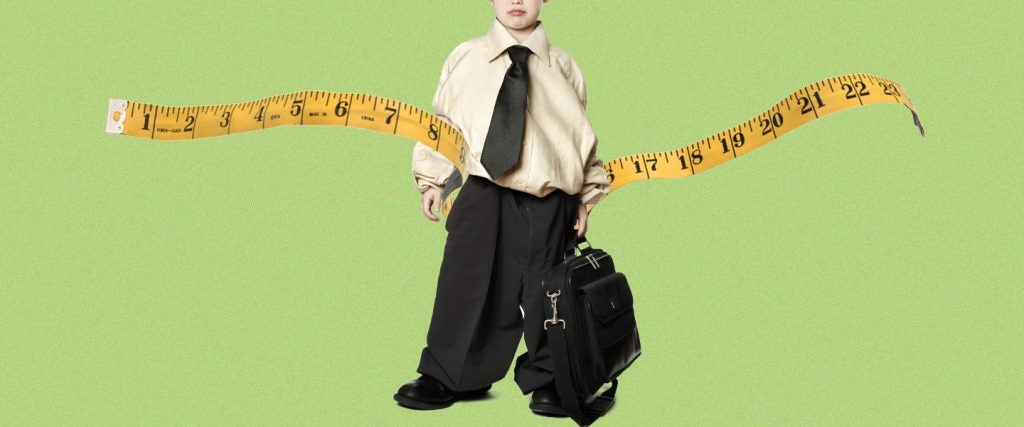As even James Bond discovered recently, tight suits are out, and “slouchy tailoring” is in. As opposed to tight pants and shirts that clasp your calves and strangle your shoulders, slouchy tailoring places a greater importance on the “three-dimensionality to clothing, emphasized by a roomier fit,” per menswear blogger Ethan Wong.
In a post on the subject, Wong writes that the extra room allows clothes to have more life. As a result, even classic pieces like wool jackets and button-down shirts don’t feel so “sterile, corporate or try-hard,” he explains. Along those lines, think of the slouchy look as a way to mimic the comfort of loose-fitting sweatpants and sweatshirts but with the requisite amount of professionalism.
Of course, as with anything, it’s about striking a balance. In this case, making sure you don’t look like an 11-year-old wearing his dad’s work clothes. And so, here are a few tips to help you toe the line between fashionably slouchy and looking like you’re swimming laps in an Olympic-size blazer.
Pants
Just because you’re going for more of a laidback look, that doesn’t mean your trousers should be overly long, says Wong. For him, “slouchy requires drape and clean lines — anything above a shivering break ruins that for me,” he writes. (A shivering break is when the hem meets the shoes’ vamps without crumpling; it’s also the Italian way of men’s tailoring.) “A nice wide opening hemmed to a shivering break will eventually break and catch on shoes by circumstance (walking, posture, etc.),” he adds. “The drape on it lends itself to being sloppy in a charming way, which is essentially slouch.”
Instead of extra long pants then, it typically means slightly wider leg openings and softer fabrics like wool and linen that don’t crease as much as they bend. “It’s about the weight of the fabric,” Wong tells me, noting that thin fabrics like tissues generally don’t slouch well. The trick, he explains, is to find breathable fabric that has a dense feel to it. “Hold it up to a window,” Wong says. “If you can see through it but it still feels heavy, that’s perfect for a slouchy look.”
Jackets
Here, it’s all about the pockets. Namely, they should feel very lived-in. “When you buy a suit or sport coat, cut open the pockets and use them,” writes Wong. He recommends putting a book in there, or something else with some heft. If the fabric stretches, so be it — that’s the whole point.
Overall, if there’s a defining characteristic to achieving a slouchy look, it’s to wear clothes in such a way that it clearly looks like they’ve been worn a bunch. Which, again, has little to do with going up a size. It’s more about taking the jackets you already own and using them in a more utilitarian way — a la putting books in the pockets. (That said, Wong does suggest sizing up if you’re in-between sizes.)
Shirts
Shirts are arguably the most difficult piece of a slouchy aesthetic to pull off — in part because we’ve long been sold an image of the poplin button-down that’s more form-fitting and rigid against the chest, which is why Wong suggests going with an Oxford cloth button-down. It’s heavier, and therefore, it continues to drape better with every wash.
Wong also appreciates denim and chambray shirts for their inherent slouch. “They have that feeling baked in,” he says. “They’re typically heftier off the rack.” The ultimate in slouch shirts, however, is his beloved rayon. “That’s why I like thrifting for shirts or buying them on eBay,” he says. “Because vintage [rayon gabardine] shirts already have that lived-in comfortable feeling.”
Could there be a finer way to slouch?

